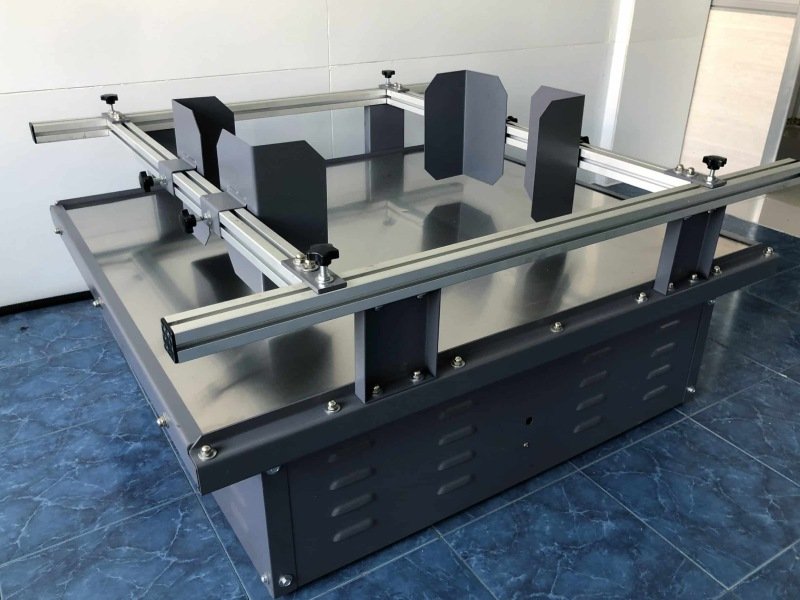In the design and fabrication of cabinetry, whether for industrial, commercial, or residential applications, the selection of appropriate latches is critical to ensuring functionality, durability, and user satisfaction. One often overlooked but pivotal factor in latch selection is the thickness of the cabinet material. For professional engineers, understanding the interplay between cabinet thickness and latch compatibility is essential to creating robust, reliable, and efficient designs. This article explores how cabinet thickness influences latch choice, delving into mechanical principles, material considerations, and practical applications. With a focus on engineering precision, we provide a detailed analysis to guide professionals in optimizing their designs.
Understanding Cabinet Thickness
Cabinet thickness refers to the measurement of the material used in the construction of cabinet doors, panels, or frames, typically expressed in millimeters or inches. Common thicknesses range from 1/4" (6mm) for lightweight panels to 1-1/2" (38mm) or more for heavy-duty industrial cabinets. The thickness is determined by the material type (e.g., plywood, MDF, solid wood, metal), the intended application, and structural requirements.
Why Thickness Matters
From an engineering perspective, cabinet thickness affects:
- Structural Integrity: Thicker materials provide greater strength and resistance to deformation, impacting the latch's load-bearing requirements.
- Fastener Compatibility: The depth available for screws or mounting hardware depends on the material thickness.
- Latch Mechanism Fit: The grip range or reach of a latch must align with the thickness to ensure secure engagement.
- Weight and Dynamics: Thicker materials often result in heavier doors, necessitating more robust latches to handle dynamic forces during operation.
Types of Latches and Their Sensitivity to Thickness
Latches come in various forms, each with unique mechanical characteristics that interact differently with cabinet thickness. Below, we categorize common latch types and analyze their thickness-related considerations.
1. Cam Latches
Cam latches are widely used in cabinetry due to their simplicity and versatility. They consist of a rotating cam that engages a strike or frame to secure the door.
- Thickness Consideration: The cam’s length and the latch’s grip range must match the cabinet thickness. For example, a 1/2" (12mm) panel requires a cam latch with a grip range of 10-15mm, while a 1" (25mm) panel may need a 20-30mm range.
- Engineering Insight: The cam’s offset and rotation radius must be calculated to ensure proper engagement without excessive play. For thicker cabinets, engineers may need to specify adjustable cams or extended barrels to accommodate varying thicknesses.
- Challenges: In very thin panels (<6mm), the latch body may protrude, compromising aesthetics or functionality. In thick panels (>38mm), standard cams may not reach the strike, requiring custom solutions.
2. Magnetic Latches
Magnetic latches use magnetic force to hold cabinet doors closed, offering a clean, minimalist appearance.
- Thickness Consideration: While less sensitive to thickness than mechanical latches, the magnetic force must be sufficient to secure the door across the material’s depth. Thicker or heavier doors may require stronger magnets or dual-magnet systems.
- Engineering Insight: The magnetic field strength decreases with distance, following an inverse-square law. Engineers must calculate the required magnetic pull force based on the door’s weight and thickness. For example, a 3/4" (19mm) MDF door may need a magnet with a 10-15 lb pull force, while a 1-1/4" (32mm) solid wood door may require 20-25 lb.
- Challenges: In metal cabinets, thickness can affect magnetic performance due to shielding effects, necessitating careful material selection.
3. Push-to-Close Latches
Push-to-close (or touch) latches allow doors to latch upon being pushed closed, often used in modern cabinetry for a handle-free look.
- Thickness Consideration: These latches require precise alignment of the bolt and strike, which is influenced by the cabinet thickness. Thicker materials may need extended bolts or deeper strikes to ensure engagement.
- Engineering Insight: The latch’s spring mechanism must be calibrated to handle the door’s weight and closing force. For thicker, heavier doors, a higher spring constant is required to prevent bounce-back. Finite element analysis (FEA) can be used to model stress distribution around the latch mounting area.
- Challenges: In thin panels, the latch may weaken the material if not properly reinforced. In thick panels, the bolt’s travel distance must be sufficient to engage the strike fully.
4. Slide or Barrel Latches
Slide or barrel latches involve a bolt that slides into a strike or keeper, commonly used in sliding doors or heavy-duty applications.
- Thickness Consideration: The bolt’s length and the latch’s mounting depth must accommodate the cabinet thickness. Thin panels may limit the use of barrel latches due to insufficient material for secure mounting.
- Engineering Insight: The shear strength of the bolt and the material’s resistance to pull-out forces are critical. For a 1" (25mm) panel, engineers must ensure the bolt’s cross-sectional area and material (e.g., stainless steel) can withstand the applied forces, calculated using shear stress equations (τ = F/A).
- Challenges: Thick panels may require longer bolts, increasing material costs and installation complexity.
Mechanical and Material Considerations
Grip Range and Adjustability
The grip range is a critical specification for latches, defining the minimum and maximum thickness they can accommodate. For example:
- A cam latch with a grip range of 10-20mm is suitable for 1/2" to 3/4" panels.
- Adjustable latches, with spacers or telescoping mechanisms, offer flexibility for varying thicknesses but may compromise strength in high-load applications.
Engineers should consult manufacturer datasheets to verify grip ranges and consider tolerances. A tolerance stack-up analysis ensures the latch remains functional across the cabinet’s thickness variations (e.g., ±0.5mm for plywood).
Fastener Selection
The choice of fasteners—screws, rivets, or bolts—depends on the cabinet thickness and material properties.
- Thin Panels (6-12mm): Short wood screws or self-tapping screws are common. Engineers must ensure the screw length does not exceed the panel thickness to avoid protrusion.
- Medium Panels (12-25mm): Standard wood or machine screws with a length of 0.75x to 1x the panel thickness provide secure fastening without compromising the material.
- Thick Panels (>25mm): Longer screws or through-bolts may be required, with washers to distribute load and prevent pull-through.
For metal cabinets, thread-forming screws or rivets are preferred, with torque calculations to prevent stripping (T = K × D × F, where K is the friction coefficient, D is the screw diameter, and F is the axial force).
Material Strength and Latch Load
Thicker cabinets are typically stronger, but the latch must withstand the door’s weight and dynamic forces during operation. For example:
- A 3/4" (19mm) MDF door weighing 5 kg requires a latch with a holding force of at least 50-100N to account for dynamic loading.
- A 1-1/2" (38mm) solid oak door weighing 10 kg may need a latch with a 200-300N holding force.
Engineers can use stress analysis to ensure the latch and cabinet material can handle these loads, applying equations like σ = F/A (stress = force/area) to verify the material’s yield strength is not exceeded.
Practical Applications and Case Studies
Case Study 1: Industrial Control Cabinets
In an industrial control cabinet with 1" (25mm) steel panels, engineers selected heavy-duty cam latches with a 20-30mm grip range. The latches were secured with M6 machine screws, with torque applied to 10 Nm to ensure stability. The thick steel required a latch with a high shear strength (500N) to handle frequent access and vibration. FEA confirmed that the latch mounting area could withstand cyclic loading without fatigue failure.
Case Study 2: Residential Kitchen Cabinets
For a kitchen cabinet with 3/4" (19mm) MDF doors, push-to-close latches were chosen for a sleek design. The latches had a 15-22mm grip range and a 100N holding force to accommodate the door’s 4 kg weight. Engineers reinforced the mounting area with epoxy to prevent material degradation, ensuring long-term reliability.
Case Study 3: Lightweight Display Cabinets
A display cabinet with 1/4" (6mm) plywood panels used magnetic latches with a 5 lb pull force. The thin material limited fastener options, so engineers opted for adhesive-backed magnets to avoid compromising the panel’s integrity. Testing confirmed the magnets provided sufficient holding force for the lightweight doors.
Best Practices for Engineers
- Measure Precisely: Use calipers to measure cabinet thickness accurately, accounting for coatings or laminates.
- Consult Manufacturer Specs: Verify the latch’s grip range, holding force, and fastener requirements before selection.
- Perform Load Analysis: Calculate static and dynamic loads on the latch using engineering principles (e.g., F = m × a for dynamic forces).
- Consider Tolerances: Account for manufacturing variations in cabinet thickness (±0.5-1mm) to ensure latch compatibility.
- Test Prototypes: Build and test a prototype to validate latch performance under real-world conditions.
- Document Decisions: Maintain detailed records of latch selection criteria, including calculations and test results, for quality assurance and future reference.
Advanced Considerations
Finite Element Analysis (FEA)
For high-stakes applications, FEA can model stress distribution around the latch mounting area. By inputting the cabinet thickness, material properties (e.g., Young’s modulus, yield strength), and latch forces, engineers can predict failure points and optimize the design. Software like ANSYS or SolidWorks is commonly used for this purpose.
Dynamic Loading and Fatigue
In applications with frequent door operation (e.g., industrial cabinets), engineers must consider fatigue life. The latch and fasteners should be tested for cyclic loading using standards like ASTM E466. For a 1" (25mm) panel, a latch with a fatigue limit of 10^6 cycles at 200N is ideal.
Environmental Factors
Cabinet thickness can influence latch performance in specific environments:
- Moisture: Thick wooden cabinets may swell, requiring latches with adjustable grip ranges.
- Temperature: Metal cabinets in extreme temperatures may expand or contract, affecting latch alignment.
- Corrosion: In marine or chemical environments, thicker panels may require stainless steel latches to resist corrosion.
Conclusion
Cabinet thickness is a critical parameter in latch selection, influencing grip range, fastener compatibility, and load-bearing capacity. Professional engineers must approach latch selection with a rigorous understanding of mechanical principles, material properties, and application requirements. By measuring thickness accurately, consulting manufacturer specifications, and applying engineering analysis, professionals can ensure robust, reliable, and efficient cabinet designs. Whether designing industrial control cabinets, residential kitchen cabinetry, or lightweight display units, the interplay between thickness and latch performance cannot be overlooked. Through careful planning and testing, engineers can deliver solutions that meet both functional and aesthetic demands, enhancing the longevity and usability of their designs.







